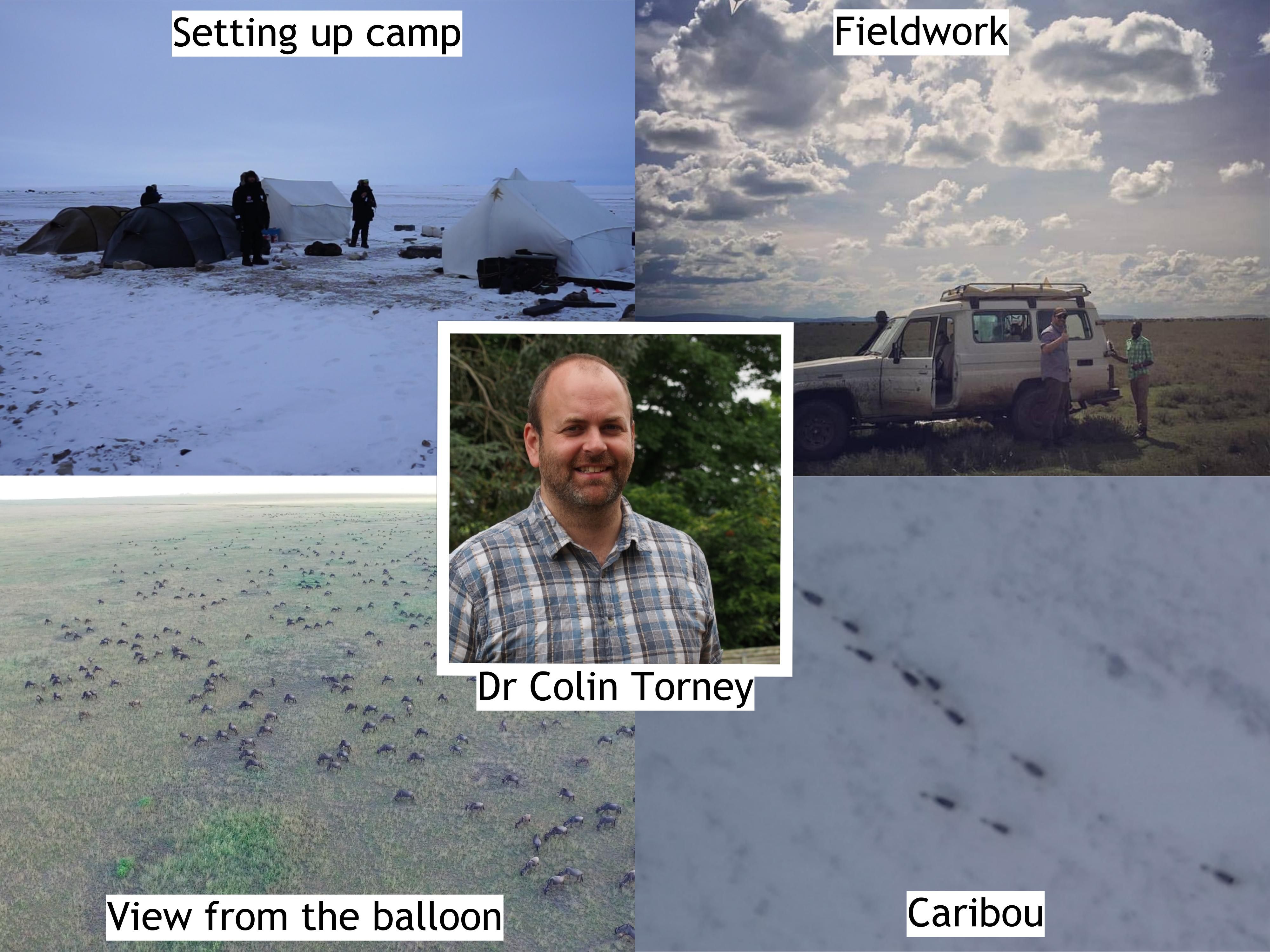A spotlight on...
Published: 15 February 2018
Dr Colin Torney, Lecturer in Applied Mathematics
Dr Colin Torney, Lecturer in Applied Mathematics
Colin, you were appointed to the School in 2016, as part of an initiative to promote mathematical research aligned to biology. How have you been doing in your first year or so with us?
I've been teaching a final year course in Mathematical Biology, which has been fun and it’s nice to teach a course that’s related to my research interests. I've enjoyed interacting with the students. In research, I've had a couple of trips to Tanzania, using drones to film wildebeest. There are new regulations now which prevent the use of drones so we have moved to helium balloons. Transporting large canisters of helium to the Serengeti is an interesting assignment! Some tests have been run locally, at the University Farm at Cochno, although the environment in Africa has proved more challenging. In terms of publications, work on our study of caribou movement in the Artic is due to appear in print very soon. There will also be a special issue of Phil. Trans. Roy. Soc. Series B on collective animal movement in ecology, and I am one of the guest editors.
Your research involves the study of animal movement. Could you explain why people are so interested in this?
Animal movement in general is a very important ecological process. These days that process is under a lot of pressure through habitat fragmentation, industrial development and other forms of human activity, as well as climate change. If movement is disrupted that has potentially serious consequences for the animal populations and subsequently to the environment more generally. Collective movement is where the mathematics comes in. We aim to model how animals behave and how group behaviour emerges. Broadly, the questions are: Which individuals are leaders? Is the group collectively smarter than the individuals? Does the size of the group determine the ability to navigate or to detect predators?
So what kind of mathematics is involved?
Simulation is an important tool. This can be based on the assumed behaviour of individuals. Models borrowed from statistical physics can be used to describe how these individual behaviours combines to create collective behaviour. Differential equations, stochastic processes and computational inference are some of the mathematical tools which can be used. At the moment the emphasis is on the development of methodology and we’ve used these methods to study the behaviour of wildebeest in Tanzania and caribou on Victoria Island, Canada.
I understand you were recently awarded some support by the University from the Global Challenges Research Fund (GCRF). First of all, can you explain what GCRF is about and then tell us something of your own project?
GCRF is a funding scheme which channels overseas aid through collaborative scientific projects addressed at serious challenges in the developing world. Our project will use the methods we are developing to automate the monitoring of the wildebeest population in Tanzania. We are developing `deep learning' algorithms to track animals through video footage. The same algorithms will be used to find wildebeest from aerial photographs taken during the population census. If this proves effective it will have a very big influence in future monitoring because it means park managers can get reliable data more cheaply and more quickly. The project is in partnership with the Nelson Mandela African Institute of Science and Technology and we will be running workshops in Tanzania to train students and staff in these methods.
Here are some pictures from Colin’s research!

First published: 15 February 2018
<< February 18

